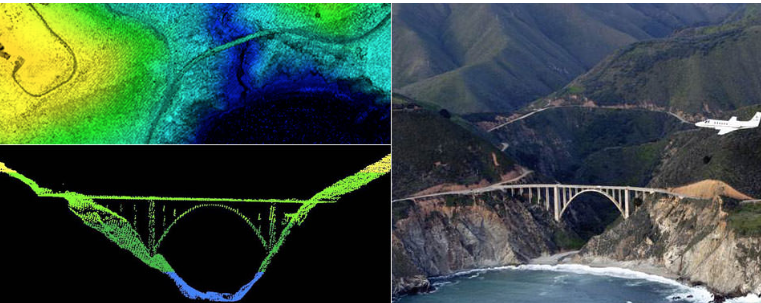

[Satnews] DARPA is soliciting innovative research proposals for integrated free-space optical systems.
The MOABB program seeks to demonstrate a modular architecture that will co-integrate an optical aperture, non-mechanical beam steering and the associated optics and control electronics onto a planar semiconductor substrate. The capability of this technology will then be demonstrated in a packaged LIDAR system.
The Modular Optical Aperture Building Blocks (MOABB) program seeks to develop the technologies necessary to demonstrate an integrated photonic device capable of generating, amplifying, transmitting and receiving free-space optical radiation over a wide angle. To this end, MOABB seeks to construct planar, millimeter-scale transmit/receive unit cells with a high fill factor aperture, non-mechanical beam steering and integrated amplification. The driving design goal is to tile the unit cells, assembling a larger, coherent higher-power aperture. The program ultimately seeks to fabricate a coherent ten centimeter transmit/receive array with distributed gain that is manufactured using wafer-scale processing.
Successful proposals will co-integrate the optical source, detector and control electronics into the system. The program also seeks to demonstrate the coherent array technology through the construction and test of a packaged LIDAR system capable of three-dimensional imaging at 100 m range. Proposals suggesting device architectures not amenable to wafer-scale processing are discouraged unless a low-cost technique for die-level integration is developed. Proposals that employ mechanical components or bulk optics, such as mirrors and lenses, are also discouraged. At its essence, the MOABB program is driving towards free-space optical systems with ultra-low size, weight and cost with beam scanning speeds much greater than the state of the art.
DARPA seeks innovative proposals in the following two Technical Areas (TA):
- Technical Area One: Develop the fundamental technologies for a tileable optical array element for operation in the short-wave infrared band. This millimeter-scale unit cell will include optical gain, 6 non-mechanical beam-steering, a high fill-factor out-coupler, control electronics and integrated diagnostics. Technology development should be compatible with planar, semiconductor processing. The results of this Technical Area will culminate in the synthesis of a coherent 10 cm aperture with rapid, wide-angle beam-steering.
- Technical Area Two: Design, demonstrate and test a packaged LIDAR system using the Technical Area One technology. The objective performance parameters include a range of more than 100 m, power consumption below 40 W and multiple simultaneous beams. On-board processing shall enable outputs including range, direction and velocity of the LIDAR return.

LIDAR data is often collected by air, such as with this NOAA survey aircraft (top) over Bixby Bridge in Big Sur, California. Here, LIDAR data reveals a top-down (bottom left) and profile view of Bixby Bridge. NOAA scientists use LIDAR-generated products to examine both natural and manmade environments. LIDAR data supports activities such as inundation and storm surge modeling, hydrodynamic modeling, shoreline mapping, emergency response, hydrographic surveying, and coastal vulnerability analysis.
Individual proposals may address more than one Technical Area. Successful execution of Technical Area Two will require output from Technical Area One as Government Furnished Equipment (GFE) early in Phases 2 and 3. Coordination is strongly encouraged between Technical Areas. Proposals that address both Technical Areas must fulfill all the requirements defined for each and the tasks associated with each Technical Area should be clearly delineated.
All proposals should describe a clear path to the final objectives. The operation in a realistic environment should be a key focus of the proposal for both Technical Areas. Proposals should describe the thermal and mechanical constraints and potential uses for their architecture. Prototype devices and systems are expected to meet the performance objectives listed in Tables 1 and 2 for their respective Technical Areas. If objectives are proposed that are less aggressive than those defined herein, they will be considered only with justification and a sound path to meeting the final objectives, and if an appropriate risk mitigation plan is offered.
The government may request that experimental results be independently verified at any time by testing at an approved government facility, at government expense. Performance data will be provided to the government prior to submitting the test article for evaluation at a Department of (DoD) test lab.

